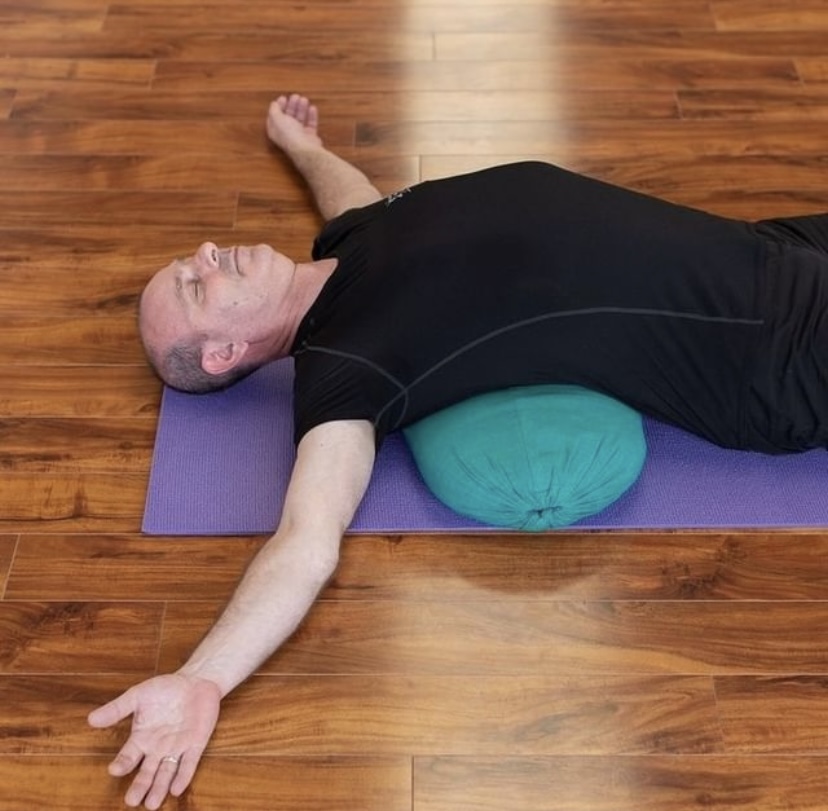9 short and sweet warm-up sequence
| By Pranali | 0 Comments
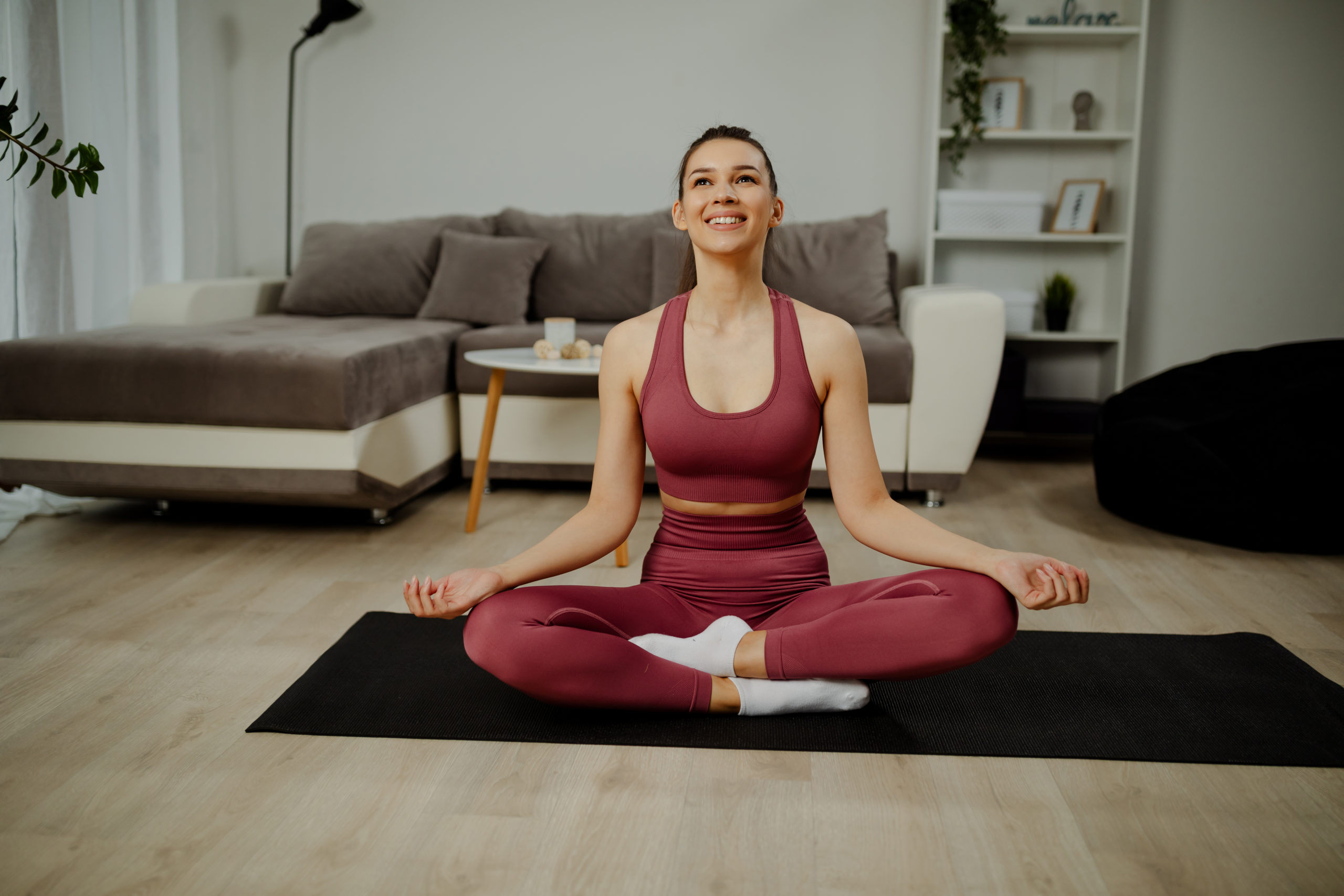

Monica
Ālaya Yoga
9 short and sweet warm-up sequence
- November 14, 2022
Here's a quick and gentle warm-up sequence for your practice
A gentle warm-up right before the Yoga practice can make a lot of difference in how you feel throughout your practice. Warming up can make your movement easy and smooth by removing the morning stiffness of the body.
Very accessible warm-up you can catch up before heading to your day to open your body and still your mind.
Asanas to include to cover all the key stations in your warm-up sequence
Start in Sukhasana: 2 minutes
1. Cross your legs and sit with spine straight, aligning your neck, spine and your hips.
2. Rest your palms on your knees with palms facing down.
3. Gently close your eye and draw your awareness inwards. Observe your breath.
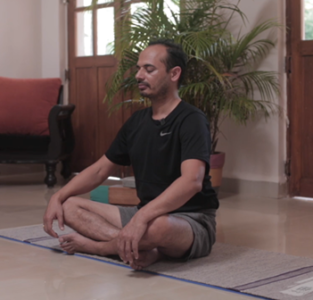
Side Body Release: One minute (30 seconds each side)
1. Inhale – Raise both your arms up to lengthen your spine.
2. Exhale to place your right hand on the right side and bend to your right.
3. Left arm stretching up, stretching your side rib cage.
4. Inhale to come back in the center.
5. Exhale and repeat on your left.

Forward stretch: One minute
From side release, come back in the centre, lengthen your spine, place your palms in front shoulder distance apart, and fold forward.
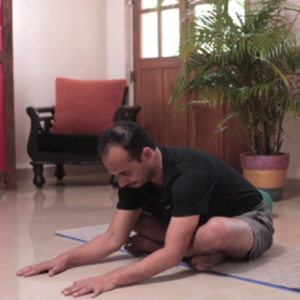
Side Twist: One minute (30 seconds each side)
1. From the forward fold come back to the centre. Inhale to lengthen your spine.
2. Exhale to place your right palm behind your right hip, left palm over your right knee and twist.
3. Look over your right shoulder.
4. Come back to the centre, lengthen, and repeat on your left.
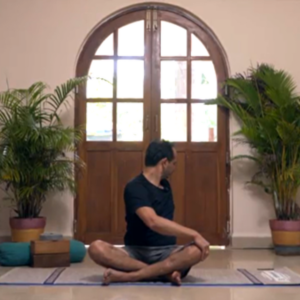
Shoulder Rotation: 30 seconds
1. Bring your knees together from Sukhasana, and swing them back to place your sit bones over your heels to sit in Vajrasana.
2. Spread your arms parallel to the floor in a T-shape.
3. Rotate your arms from the shoulder socket – clockwise and anti-clockwise.
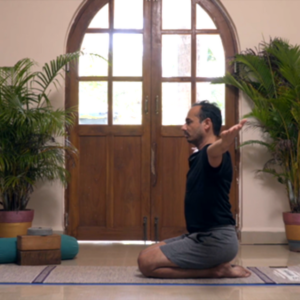
Shoulder opening: One Minute
1. From the T shape, sitting in Vajrasana, stretch your arms back.
2. Interlace your fingers.
3. Lengthen your Spine, and stretch your arms towards the floor while opening your chest.
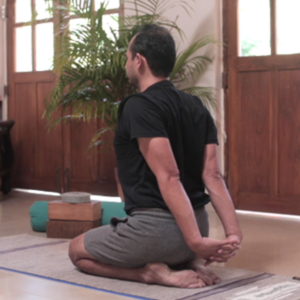
Cat & Cow: Ten Rounds
1. From Vajrasana, place your palms forward, shoulder distance apart.
2. Knee hip distance apart.
3. Wrist in line with shoulders, and knees in line with hips.
4. Inhale and move your chin and chest up, arching your spine.
5. Exhale, bring your chin to the chest, rounding your spine.
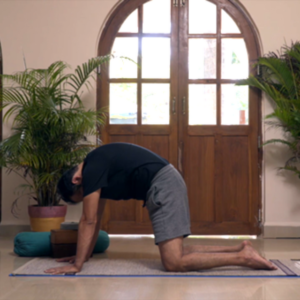
Move to Downward Dog - 30 Seconds
1. From Cat & Cow – Tuck your toes, lift your knees and bring your hips back.
2. You can walk your heels to get rid of the stiffness from your hamstrings.
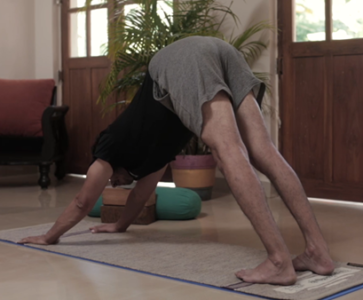
Relax your Body & Mind in the Child Pose: One Minute
1. From Downward dog, bring your knees down on the floor, bring your sit bones over your heels and fold.
2. Relax your head and hands.
3 Breath and take this time to connect back and relax your whole body.

Hope this helps you catch up with your practice when you have only a few minutes to move. All you need is a small corner to practice this warm-up, so the place is no constraint. Of course, if you have everything you need for the entire practice, then jump to our live class schedule and join your favourite class now


